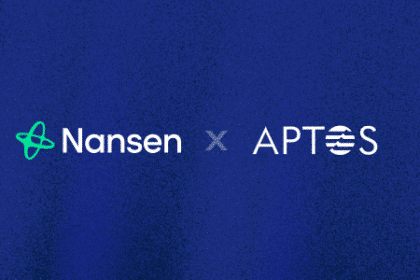Bitcoin developers gathered at Fidelity Investments’ headquarters to discuss the future of Bitcoin’s (BTC) technical capabilities. The OP_NEXT conference centred on how Bitcoin can expand its usage without compromising its stability. Developers came together to strike the perfect balance between innovation and caution, not putting the network’s core integrity at risk.
Bitcoin Developers Debate Balancing Growth and Stability
OP_NEXT brought out developers who wanted to make Bitcoin go further and become more flexible while maintaining its structure. With around 100 attendees, the conference explored how to encourage BTC to scale to millions of more users worldwide. Developers agreed that if Bitcoin wants to compete with rapidly evolving blockchains, it must be updated very carefully.
Using Bitcoin as an example of externally risky innovation, participants stressed its need for flexibility and resistance to external shocks — constant market volatility or a perceived impending regulatory crackdown. Some developers want Bitcoin to progress with upgrades, but others want to safeguard its foundation. This captured the tautness in the room, with those wanting swift improvement versus those opposed to the wobbling of BTC’s current stability.

Bitcoin Faces Ossification Risks Without New Upgrades
Of course, BTC has since undergone its most recent network upgrades, SegWit in 2017 and Taproot in 2021, enabling market abilities beyond simple BTC transactions. These upgrades brought new functionality to BTC, making it more feature-ample and compatible with other innovations in the financial space brought up by other blockchains. However, while no upgrade has succeeded since Taproot, many think technical ossification will hold BTC back in the future.
Some attendees, however, advocated for developers to proceed slowly, even though the technology still needs to evolve. They cited concerns that constant upgrades, which have altered text predictions in recent years, could throw the network out of whack and alienate traditional users. As a consequence, participants for OP_NEXT were tasked with prioritizing necessary upgrades that would prevent over-complication.
Covenant Debates and Community Consensus
However, covenants—a feature that lets users specify how their Bitcoin is spent—was one of the major themes raised at OP_NEXT, where some debated whether to implement it and others backed away from it. Developer Jeremy Rubin says covenants would bring more flexibility, but doing so would raise security concerns. Many in the community see covenants as an asset, while many more see covenants as a potential liability.
As OP_NEXT attendees noted, getting a consensus on any upgrade is challenging in a situation without centralized authority, as in BTC’s case. They agreed that any proposal, such as covenants, would have to be introduced by developing communities, sent out for debate and lengthy review, and then grazed by community approval before implementation. Stability is being maintained, but it also means that upgrades that could improve BTC in a competitive market could be on hold.
OP_CAT is another proposed proposal that revives the function of running smart contracts on BTC. Satoshi Nakamoto removed this function when he created BTC in 2010, fearing that it was not secure, but new research says it can be executed safely. If OP_CAT is adopted, it could turn Bitcoin into a dashboard proxy for Ethereum by making programmable transactions.
But many in attendance see OP_CAT as an opportunity to expand Bitcoin’s abilities, while others fear the unexpected. Some developers are aware that intelligent contract functionality could bring risks to Bitcoin. The OP_CAT debate is about keeping BTC’s security principles under tension with the drive to innovate.
‘Just don’t break it’
Most Bitcoin partisans simply stack sats, indifferently collecting Bitcoin regardless of possible technical pathways—assuming such discussions even notice. This indifference likely stems from the fact that a plurality prizes its prominent quality: valuation changes. During a recent Portland HODL occasion, a present Bitcoin Core contributor posed an inquiry to the crowd: What single focus does each Bitcoin backer want builders to address for Bitcoin? A voice called out, “Value augmentation!”
“Precisely!” Portland HODL responded, supplementing, “Just don’t break it’!”
BTC Devs Split on Upgrades and Activation Methods
During OP_NEXT, we heard concerns regarding Bitcoin’s potential resistance to future risks (e.g., quantum computing or the 2106 timestamp bug). Most developers agreed that preparing for these issues was the key to Bitcoin’s long-term survival. These issues will all be addressed through proposals for a “great consensus cleanup” soft fork to maintain functionality.
Some developers want to lean in on new features, and others could be faster, mainly if more block space is used. Several attendees discussed the need not overload BTC’s leading network with dispensable features. As Bitcoin becomes increasingly valuable and in the limelight, its developers have worked hard to make it work and stay on track.

Developers at OP_NEXT may have agreed to potential upgrades but didn’t agree on the best activation mechanism for soft forks. Many developers now see the activation methods used for past upgrades, such as Taproot and SegWit, as unsatisfactory. In the future, developers will be faced with choosing which activation methods best represent BTC’s decentralized ethos.
While developers conceded that BTC has to evolve, the OP_NEXT conference made clear that although developers agree that Bitcoin needs to change, they disagree on how much. A core priority remains balancing upgrades with caution while balancing that caution with the growing recognition of Bitcoin’s role as a widely trusted digital asset.
Stay tuned to TheBITJournal and keep an eye on Crypto’s updates. Follow us on Twitter and LinkedIn, and join our Telegram channel to be instantly informed about breaking news!






























